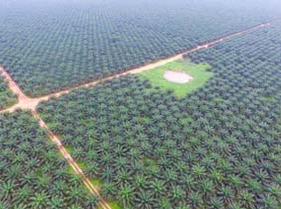
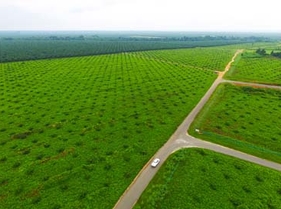
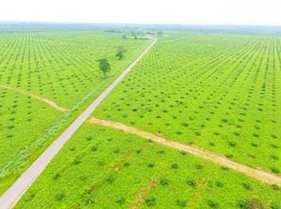
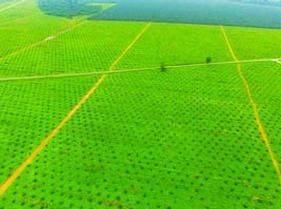
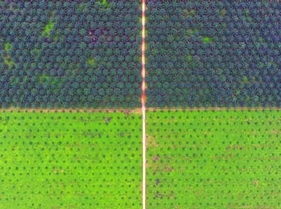
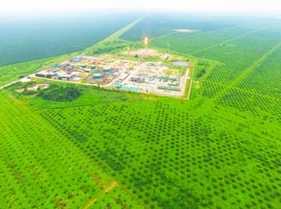
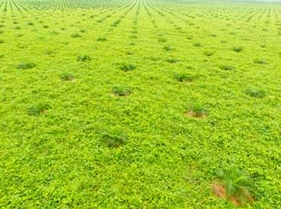
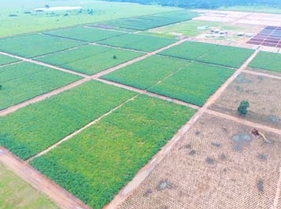
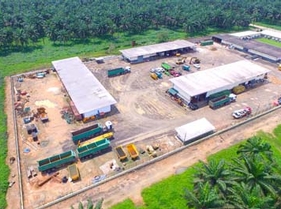
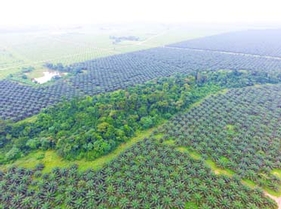
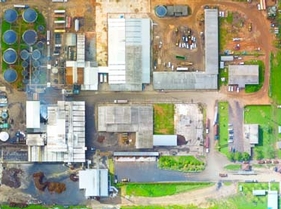
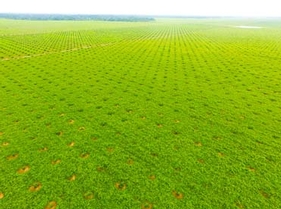
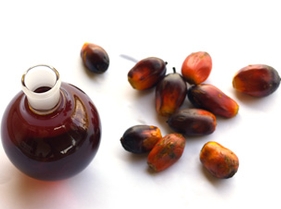
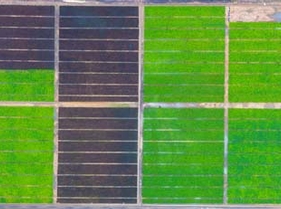
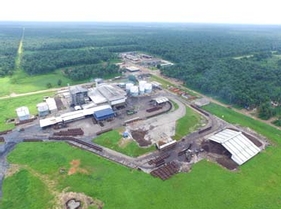

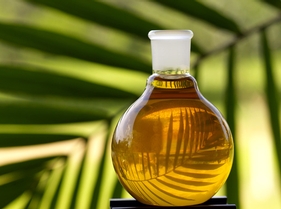
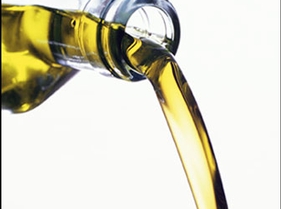
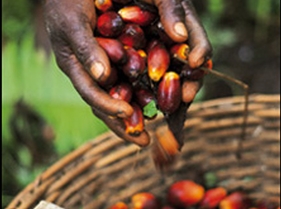
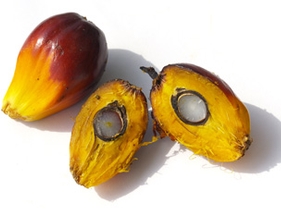
Fresh fruit bunches (FFB) from the plantations are offloaded daily at the factory's offloading bay. This ramp can contain up to 120 tons of FFB. Weighing of the fruit takes place at the electronic weighbridge at the entrance gate, before offloading.
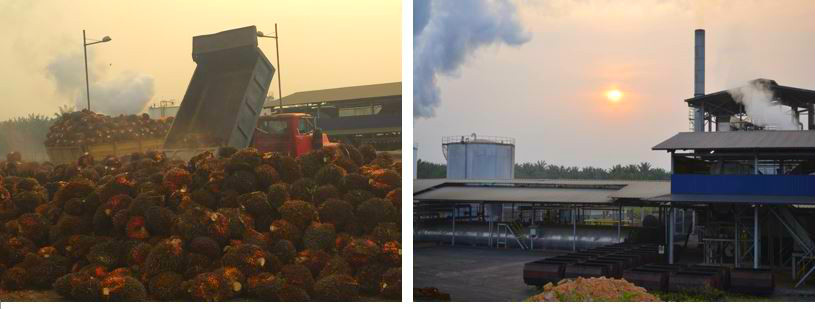
Fresh fruits bunches arrive from the field as bunches (FFB) or loose fruits to the offloading bay; the fruits are loaded into cages on a rail system. The purpose of receiving and transferring the fresh fruit bunches (FFB) is to avoid an excessive production of free fatty acids due to a natural enzymatic process in the mesocarp, transportation of the FFB from harvesting to sterilizing should not exceed 72 hours.
FFB are sterilised in order to inactivate the natural enzymatic activity and loosen the fruit, as well as to soften the mesocarp, resulting in easier extraction of oil. Sterilisation is carried out in autoclaves of 25 tons FFB capacity, with the application of live steam, at pressure of 2.8 bars, during 90 minutes.
The sterilised FFB are sent to rotary drum threshers to separate the sterilised fruits from the bunch stalks. The generated residues from this process include empty fruit bunches (EFB) which contain moisture. EFB can be used as organic fertiliser and soil conditioner as it maintains humidity of the soil.
It can be sold to local farmers for using as a substrate for mushroom cultivation. We introduce the EFB plant to recover oil and to achieve lower moisture content in the EFB, which can subsequently be used as biomass fuel in suitable boiler systems for steam/electricity production.
The separated fruits are discharged into vertical drums (digesters with live steam injection) and treated mechanically to convert them into a homogeneous oily mash. This mash is subsequently put into the oil extraction press (screw press).
Screw pressing is process to extract palm oil from mash. Hot water is added in order to improve the separation process.
The extracted oil phase is collected and discharged to the purification section while the solid parts comprising fibre and nuts are separated by physical means.
The conventional procedure of separation of Raw crude oil from heavy suspended solids by settling method.
Screening raw crude oil is carried out in order to separate large size of solids such as dirt, fibres and fragments of the pericarps from the liquid phase.
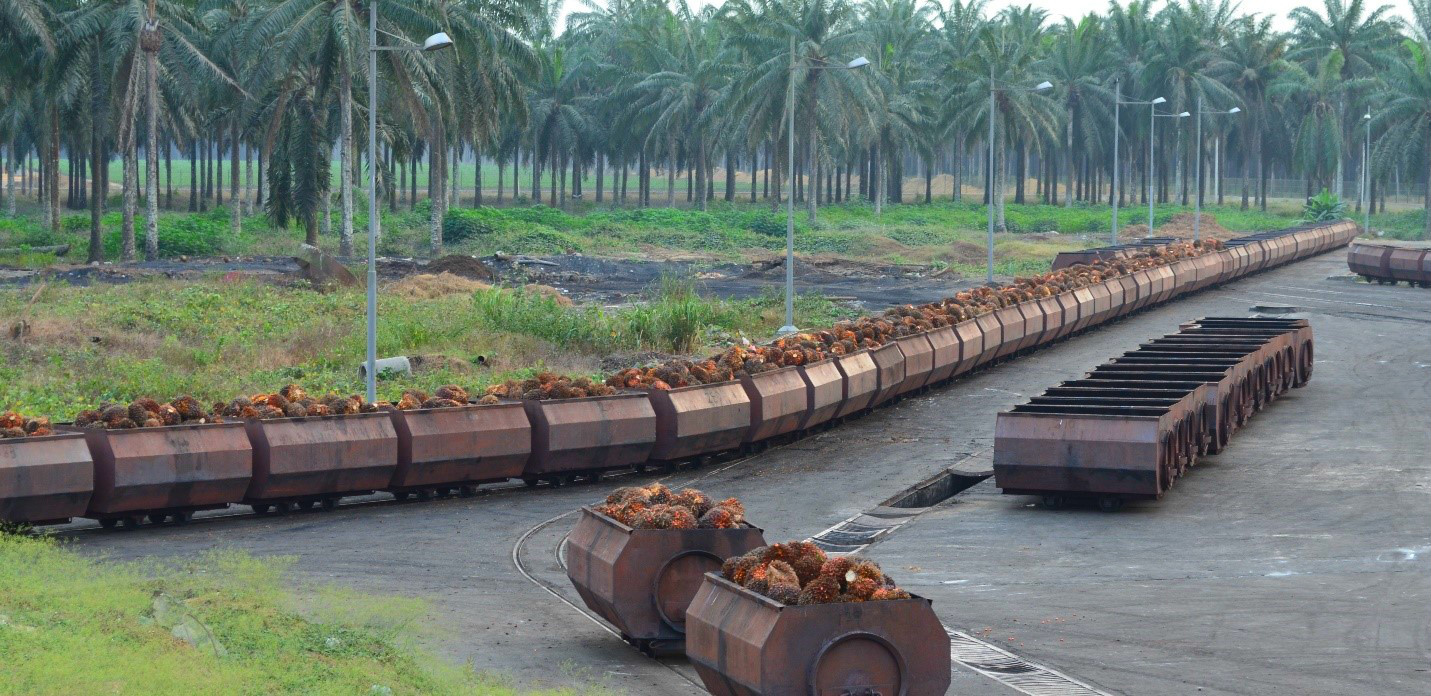
Pre – heating of the raw crude palm oil with live steam injection before entering in the C – S tank.
The conventional procedure of separation of oil from water and suspended solids is the oil separation tank method. Raw crude palm oil is heated with closed steam coils, which facilitates gravity separation. As a result, either the separated oil still contains a high concentration of suspended solids or the settled residue (settling bottom sludge) contains a high content of oil.
The settling bottom sludge is collected in the sludge tank. Before recovering the oil by using three-phase centrifuge (decanter). The Sludge passes through the desander and conveys to the sludge buffer tank.
The desander is protecting the decanter by pre-cleaning the sludge before flowing into the decanter.
The decanter three – phase centrifuge separates the sludge from the sludge tank in water phase, crude palm oil phase and solid phase.
The separated oil floating on top of the settling tank is then collected by a funnel system and sent to the oil Tank.
The crude oil is purified by removing the suspended solids and the purified crude oil goes into a vacuum dryer to reduce water content from 1% to 0.10 %.
After the solids parts leave the screw press, fibre and nuts are separated by physical means. The fibre is used as biomass fuel in boiler on-site, whereas the nuts are sent to the crackers for recovery of palm kernel, which is another product beside crude palm oil (CPO). The shell is separated from the kernel and collected for storage and only small portion of shells is used as boiler fuel.
At the palm kernel crushing plant, presses crush the kernels in two stages. The oil produced is filtered and stored as crude palm kernel oil (CPKO).The cake remaining after the pressing is used as animal feed.



















